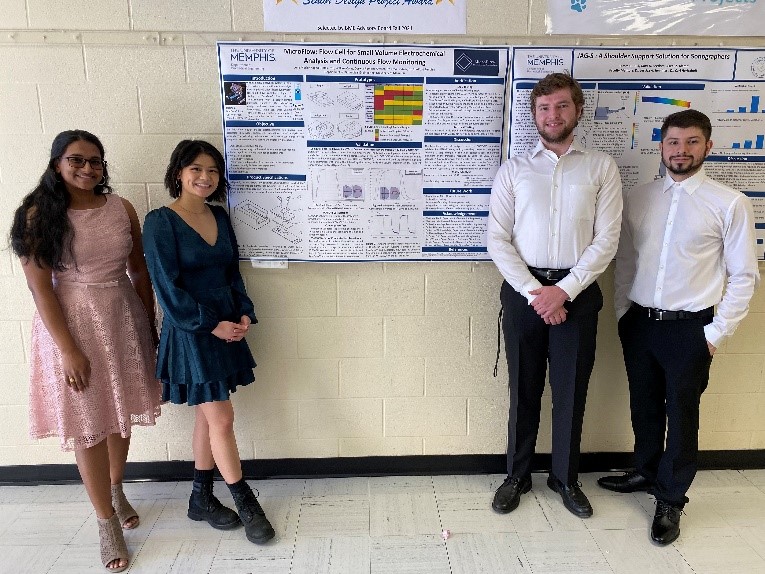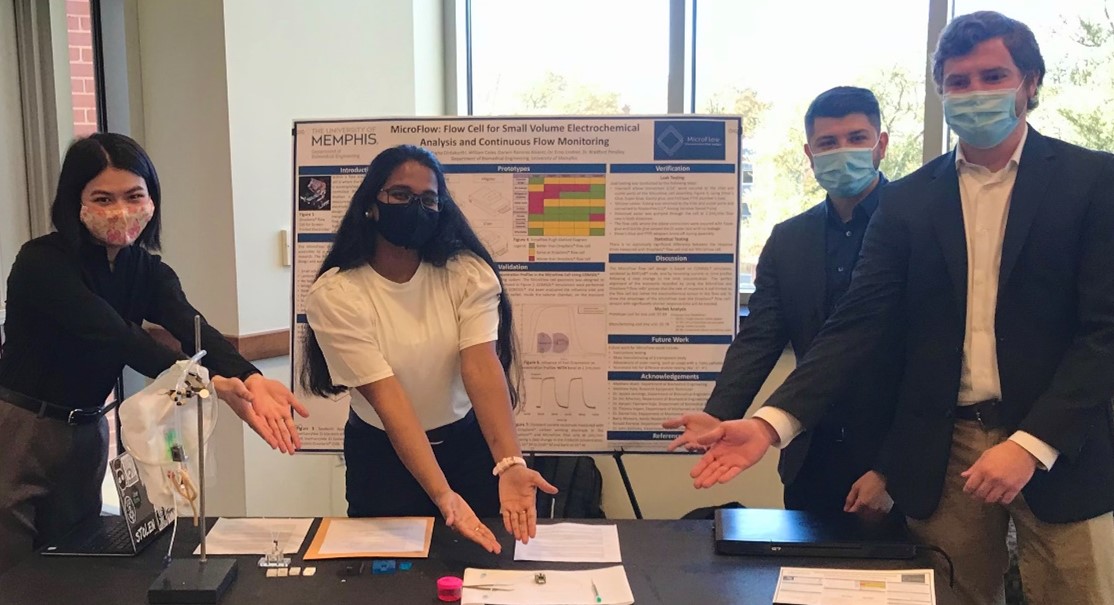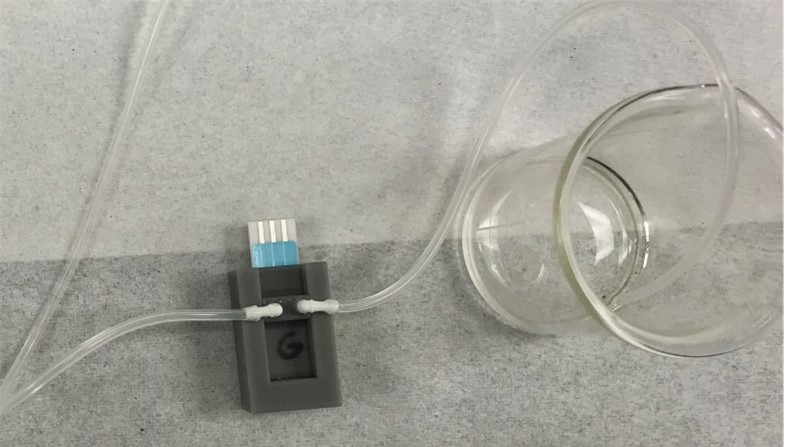Biomedical Engineering
Fall 2021 Outstanding Biomedical Engineering Senior Design Project Winner: Team MicroFlow
At the end of the Fall 2021 semester, three participating teams competed for the Best Senior Design Project competition and a $500 cash prize. Team MicroFlow was named the winner!

Team MicroFlow from left to right: Uogita Dintakurthi, Jena Masler, William Coley, Darwin Ramirez Alvarez
Team members: Jena Masler, Uogita Dintakurthi, William Coley, Darwin Ramirez Alvarez
Team advisors: Dr. Ernő Lindner and Dr. Bradford Pendley, faculty BME Department
Problem statement: There is a need for an inexpensive, single-use, small volume electrochemical flow cell to be used in conjunction with screen printed electrodes in clinical, pharmaceutical, research and environmental chemistry.
Design description: The MicroFlow flow cell is based on a sandwich design in which commercial screen-printed electrodes are easily sandwiched using a silicone rubber gasket to prevent leakage between two chemically inert outer methacrylate casings. The top casing is equipped with elbow connectors for attachment of tubing for delivery of test analytes into the small volume flow cell chamber (10-50μL). Laminar flow within the flow cell chamber was validated using computational fluid dynamic modeling for optimal sensor reading. MicroFlow sensor response matched that of a commercial flow cell but at a cost of only around $20.

Figure 1: Sandwich Assembly including 1) Outer Casing, methacrylate 2) Injectech elbow connectors 1/16”, nylon x2 3) Flow Cell, methacrylate 4) Gasket, silicone rubber (0.5mm thickness) 5) Metrohm DropSens® 110D Screen-Printed Electrode
Statement of Project Impact: Current flow cells for continuous monitoring and micro-volume sample analysis are expensive, bulky, and often inconvenient for quick usage. To combat this issue, our team designed an inexpensive, single use, small volume flow cell for screen printed electrodes available for various usages such as in clinical, pharmaceutical, research and environmental chemistry.
From Team MicroFlow: The MicroFlow team would like to acknowledge our mentors Dr. Pendley and Dr. Lindner for guiding us through the design process and pushing us to be the best engineers we can be. All of the team members learned to coordinate our strengths in separate fields to create the best design for the MicroFlow device.

TeamMicroflow at Fall 2021 presentation to Advisory Board members (left to right: Uogita Jena Masler, Dintakurthi, Darwin Ramirez Alvare, William Coley)

Assembled micro flow cell (blue arrow) with screen printed electrochemical sensor (yellow arrow)
